If you can tear yourself away from modern Saint-Remy-de-Provence* (and the ice-cream shop just into the old town from the Republique bus stop (the terminus) is highly recommended) – then you head due south, up a busy road with little provision for pedestrians, past the tourist office. I provide these directions because this is a town astonishingly lacking in signs and the street maps that most French tourist centres are liberally sprinkled with – and the tourist office is usefully closed on Sunday.
It is uphill all the way, which at least means a downhill run “homeâ€. And just when you are starting to wonder if there’ll be sufficient reward for this hard work, on the right the official entrance to what was ancient Gallo-Greek, then Roman, town of Glanum.
It is a fitting introduction, for it marks the moment that the town changed hands – the astonishingly intact (and it doesn’t look restored) mausoleum is that of the family Julii, who took their name, of course, from Caesar, when they fought in his army against those dreadful barbarian Gauls. (Although when you get into Glanum you’ll find they were pretty damned civilised for barbarians – indeed with buildings scarcely distinguishable from the Roman.)
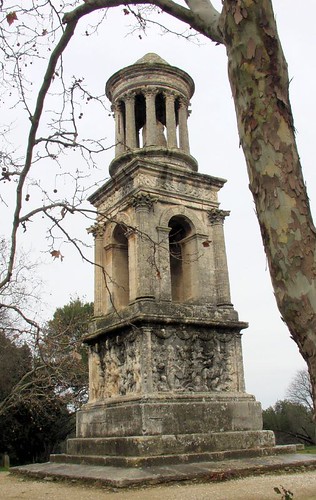
But on the carvings around the mausoleum they are appropriately savage foes to be overcome, with an additional interlay of anachronistic Homeric legend, to prove the new-found civilisation of the family…
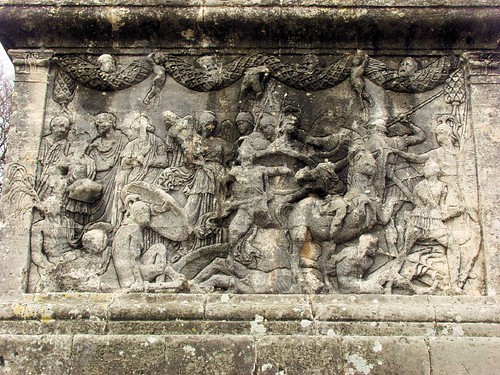
The east side: Acts of bravery by the founders of the family Julii in the army of Caesar
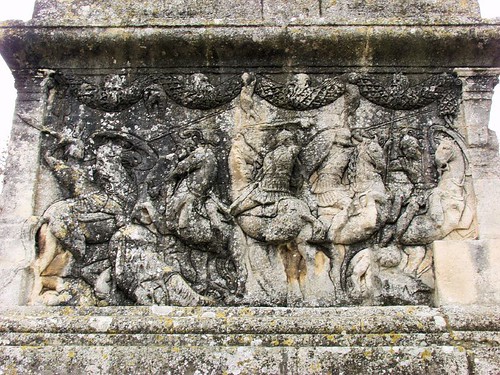
The north side: Horseback combat – the horses “semblent jaillir de la pierreâ€. (My pocket dictionary failed me on that one – can anyone help?)

The west side: Showing Menelas recovering the corpse of Patrocle from the Trojans
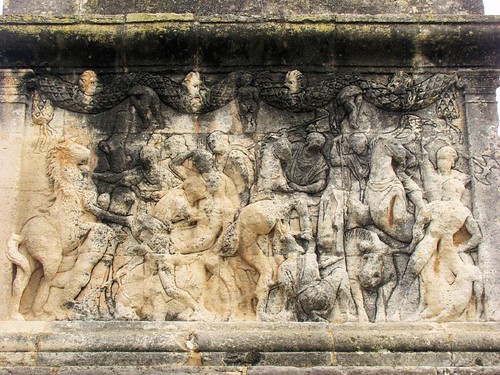
The south side: Chasing the wild boar on Calydon with Castor and Pollux.
(At least I think I’ve got those right – classicists should feel free to correct…)
Right beside the mausoleum is the triumphal arch, rather more damaged not so much by time as, one suspects, some local farmers with curiously well-cut stone houses…

(No sorry, don’t know who the family are – I was just borrowing them for artistic effect…)
Some of the carving is beautifully done – the local stone here (and I think it is limestone) seems to hold a line remarkably well.
This is the decoration right under the arch …
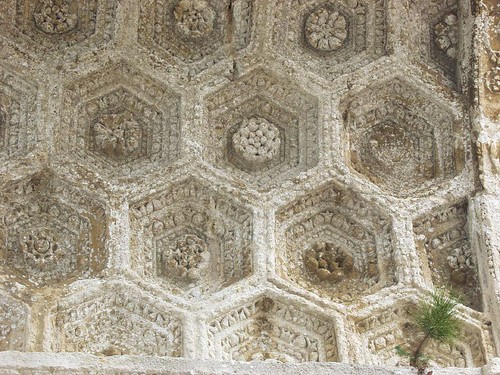
And on the west side – for entering the city, are the promises of the riches for those who enter into the Roman life – fruits, grapes and general abundance…
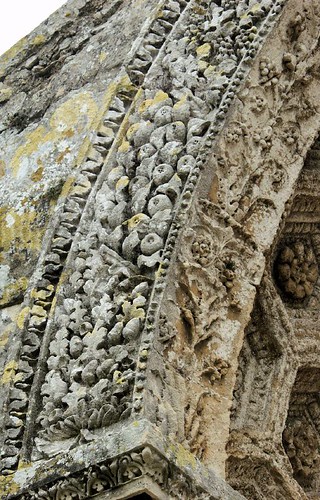
But did it live up to its promise? That’s the cliffhanger for tomorrow…
*St-Remy – yeah it’s chief claim to fame is being the supposed birthplace of Nostradamus – and it also has some houses that look like they haven’t been renovated since his time…

 About
About
One comment
Pingback: Ancient Glanum - Philobiblon